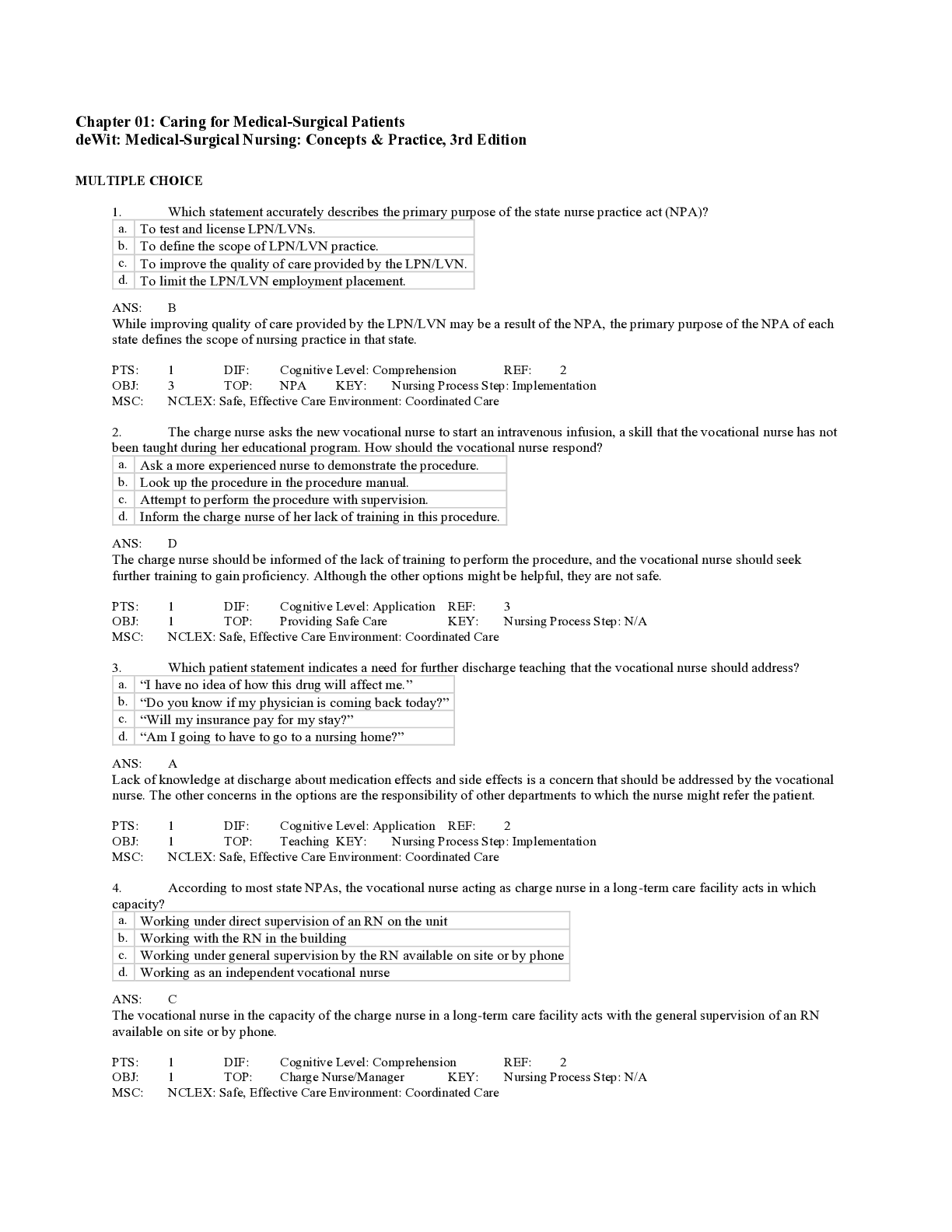Chapter 01: Caring for Medical-Surgical Patients deWit: Medical-Surgical Nursing: Concepts & Practice, 3rd Edition
Course
Project Management
Subject
Chemistry
Category
Questions and Answers
Pages
367
Uploaded By
ATIPROS
Preview 1 out of 367 Pages

Download all 367 pages for $ 15.00
Reviews (0)
$15.00
